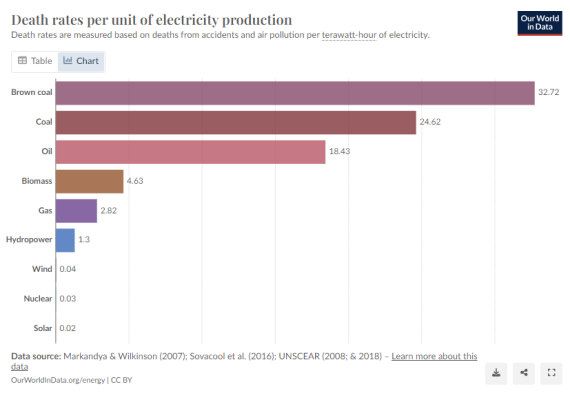 Arguments
Arguments
 Software
Software
 Resources
Comments
Resources
Comments
 The Consensus Project
The Consensus Project
 Translations
Translations
 About
Support
About
Support


Latest Posts
- Skeptical Science New Research for Week #49 2025
- Climate Adam & Dr Gilbz - Paris Climate Agreement At 10: Did It Do Anything?
- Fact brief - Does the recent slowdown in Arctic sea-ice extent loss disprove human-caused warming?
- Why the chemtrail conspiracy theory lingers and grows – and why Tucker Carlson is talking about it
- 2025 SkS Weekly Climate Change & Global Warming News Roundup #48
- Skeptical Science New Research for Week #48 2025
- Consensus machines
- Just have a Think - How an African energy revolution could save ALL of us.
- A girl’s grades drop every summer. There’s an alarming explanation.
- 2025 SkS Weekly Climate Change & Global Warming News Roundup #47
- Fact brief - Are changes in solar activity causing climate change?
- Skeptical Science New Research for Week #47 2025
- Exploring newly released estimates of current policy warming
- Climate Adam - Why the Climate Crisis is a Health Crisis
- Super pollutants are trendy, but we should be careful how we use them
- 2025 SkS Weekly Climate Change & Global Warming News Roundup #46
- Skeptical Science New Research for Week #46 2025
- On the Gates climate memo
- Climate Adam - Climate Scientist responds to Bill Gates
- Five ways Joe Rogan misleads listeners about climate change
- 2025 SkS Weekly Climate Change & Global Warming News Roundup #45
- Skeptical Science New Research for Week #45 2025
- Debunking Joe Rogan, Dick Lindzen, and Will Happer
- Fact brief - Does cold weather disprove human-caused climate change
- Climate change strengthened Hurricane Melissa, making the storm’s winds stronger and the damage worse.
- 2025 SkS Weekly Climate Change & Global Warming News Roundup #44
- Skeptical Science New Research for Week #43 2025
- Climate Adam - Can Solar Halt the Desert?
- Fact brief - Is there empirical evidence for human-caused global warming?
- A “controversial” methane metric?
Archived Rebuttal
This is the archived Intermediate rebuttal to the climate myth "Wind turbines are error prone and a threat to human health and safety". Click here to view the latest rebuttal.
What the science says...
|
Turbine collapse or breakage are extremely rare, utilising safety mechanisms to survive extreme weather conditions, and the mortality rate from wind energy pales in comparison to the risks associated with fossil fuels. |
Turbine collapse or breakage are extremely rare, and utility-scale wind turbines are fitted with safety mechanisms to survive extreme weather conditions, such as hurricanes. Turbine blade breakage does not pose a significant threat to humans (McGugan et al. 2015). The Department of Energy has noted that, although the risk of turbine blades becoming detached during operation “was a concern in the early years of the wind industry,” such failures “are virtually non-existent on today’s turbines due to better engineering and the use of sensors.”2 Turning to all turbine blade failures, rather than just turbine blade detachment, a 2015 study found that wind turbine blades fail at a rate of approximately 0.54% per year globally3. The Department of Energy has further reported that “catastrophic wind turbine failures . . . are considered rare events with fewer than 40 incidents identified in the modern turbine fleet of more than 40,000 turbines installed in the United States as of 2014.”4
When looking at deaths per terawatt-hour of energy produced, the mortality rate from wind energy pales in comparison to the risks associated with fossil fuels. Brown coal causes 32.72 human deaths per terawatt-hour, while black coal causes 24.6 human deaths, oil causes 18.4 human deaths, natural gas causes 2.8 human deaths, and wind energy causes only 0.04 human deaths5.
Figure 11: Death rates per unit of electricity production. Source: Hannah Ritchie, Our World in Data.
Footnotes:
[1] How do wind turbines survive severe storms?, Office of Energy Efficiency and Renewable Energy, U.S. Department of Energy, (June 20, 2017)
[2] Wind Energy Projects and Safety, Dep’t of Energy (last visited March 25, 2024)
[3] GCube Insurance Services, Inc. GCube report: breaking blades: global trends in wind turbine downtime events (2015), summarized in Chen & Eder (2020), A Critical Review of Damage and Failure of Composite Wind Turbines Blade Structures, IOP Conference Series: Materials Sci. and Engineering (2020)
[4] Wind Vision: A New Era for Wind Power in the United States, U.S. Department of Energy, 105 (2015)
[5] Hannah Ritchie, What are the safest and cleanest sources of energy?. To the extent that wind-related fatalities tend to occur disproportionately during the construction phase, this analysis may overstate the fatalities per terawatt-hour of wind, which would be expected to decline over time. See Benjamin K. Sovacool et al. (2016), Balancing safety with sustainability: assessing the risk of accidents for modern low-carbon energy systems, 112 Journal of Cleaner Production 3952, 3960, Jan. 20, 2016, (showing in Table 5 that most wind-related deaths occurred during construction)
This rebuttal is based on the report "Rebutting 33 False Claims About Solar, Wind, and Electric Vehicles" written by Matthew Eisenson, Jacob Elkin, Andy Fitch, Matthew Ard, Kaya Sittinger & Samuel Lavine and published by the Sabin Center for Climate Change Law at Columbia Law School in 2024. Skeptical Science sincerely appreciates Sabin Center's generosity in collaborating with us to make this information available as widely as possible.
Updated on 2024-09-01 by Ken Rice.
THE ESCALATOR

(free to republish)

























































